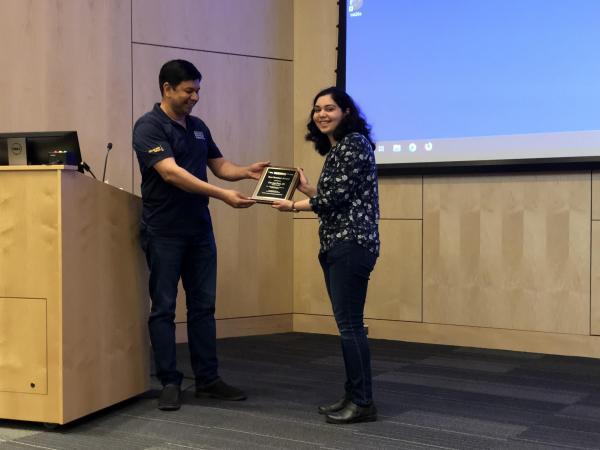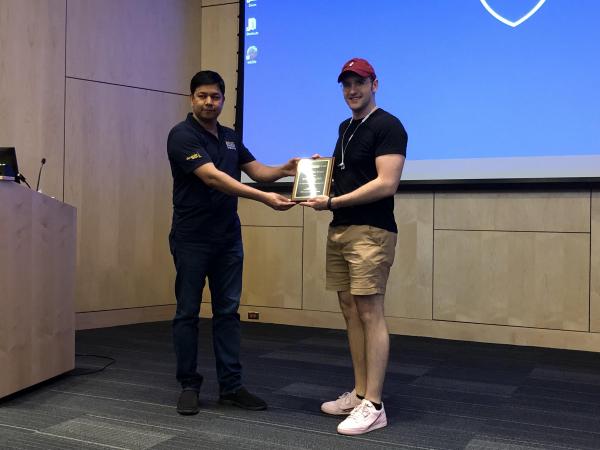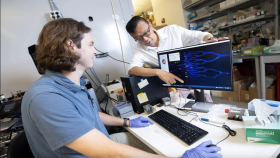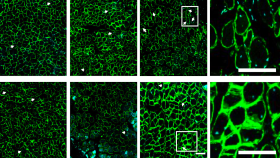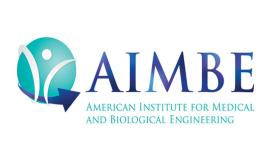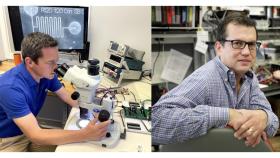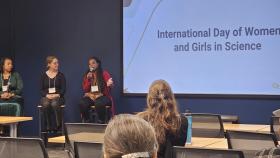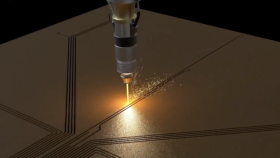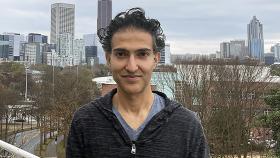On May 3, 2019, the Best Seminar Award winners in the Wallace H. Coulter Department of Biomedical Engineering at Emory were announced. Participants in the seminar presentation series were evaluated during Fall semester and scored in several areas. Sandeep Kumar, assistant professor in the Wallace H. Coulter Department of Biomedical Engineering, presented each winner a plaque commemorating their win.
Devina Puri won in the Ph.D. candidate category. Her talk covered, “Single-cell Dynamics of Bacterial Biofilm Formation.”
Jackson Hair, Ph.D., won in the postdoctoral category. His talk covered, “Motion-Compensation with Self-Navigation MRI.”
Short description of Puri’s talk:
Single-cell Dynamics of Bacterial Biofilm Formation
“Bacterial biofilms are communities of bacterial cells that are attached to surfaces and embedded in a self-produced extracellular matrix. Cells in the biofilm state exhibit behaviors that are different from their free-swimming counterparts, like higher tolerance to antibiotics and increased ability to evade immune response. Since these variations are believed to protect cells from harmful environments, biofilm formation is clearly a key survival strategy for bacteria. Biofilms that develop on implantable medical devices and host tissues, can lead to chronic infections that are difficult to treat. Given the clinical significance of biofilms, there is still a lack of rigorous understanding of the process of biofilm formation. To address this problem, we employed single-cell microscopy techniques to investigate the sequence of events that allow individual bacterial cells to form complex 3D biofilms. Through quantitative approaches, we were able to analyze the dynamics of biofilm formation and identify important cellular behaviors. This investigation revealed that single cells make decisions based on their environments, which determine how cells behave in biofilms and infections. Understanding the behavior of individual cells in relevant conditions would enable us to identify critical steps that lead to the bulk behavior of their communities. This would allow the design therapies that could inhibit those cellular behaviors for effectively preventing biofilm formation.”
Short description of Hair’s talk:
Motion-Compensation with Self-Navigation MRI
“His research is focused on developing a non-invasive diagnostic methodology for patients with coronary artery disease using MRI. To do this, I need to have an MRI protocol capable of acquiring the necessary anatomic information. This talk discussed two different methods for doing this that both rely on the same principle. Imaging the heart is difficult in practice primarily due to motion from both cardiac motion and respiration. The cardiac cycle is fairly repetitive, so we can account for it through timing. Breathing motion is less predictable, however, and trying to gate the acquisition like this can result in very long scan times. I discussed a novel acquisition technique wherein the acquisition is done in a specific pattern that allows us to map the respiratory motion over time using the image data themselves and a 1D Fourier transform. We can then either perform motion correction to realign all the image data to remove motion artifacts, or we can bin the data into multiple respiratory states and use compressed sensing techniques to reconstruct a separate image set for each state.”
Media Contact
Walter Rich

